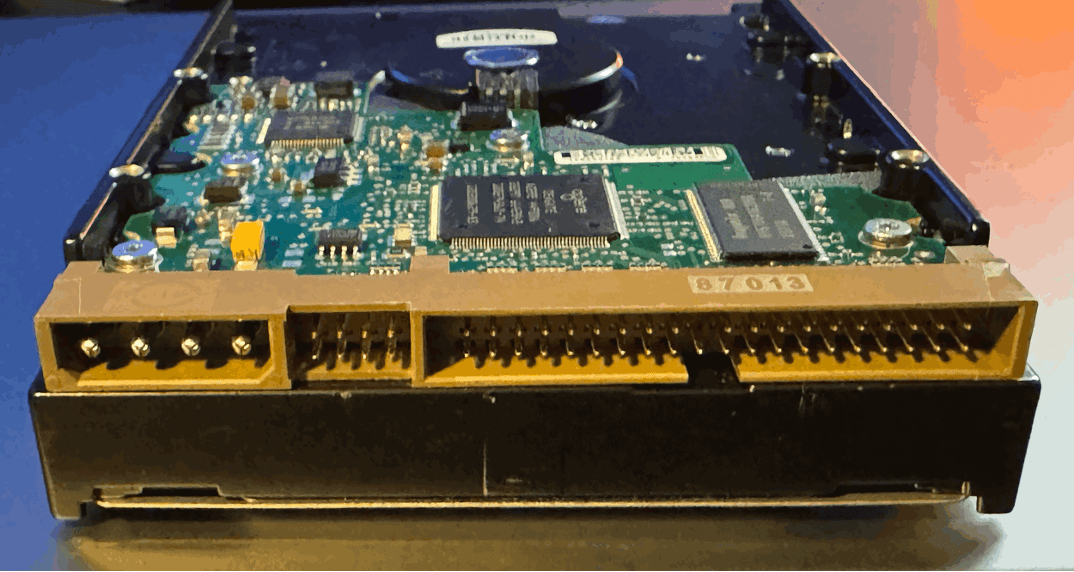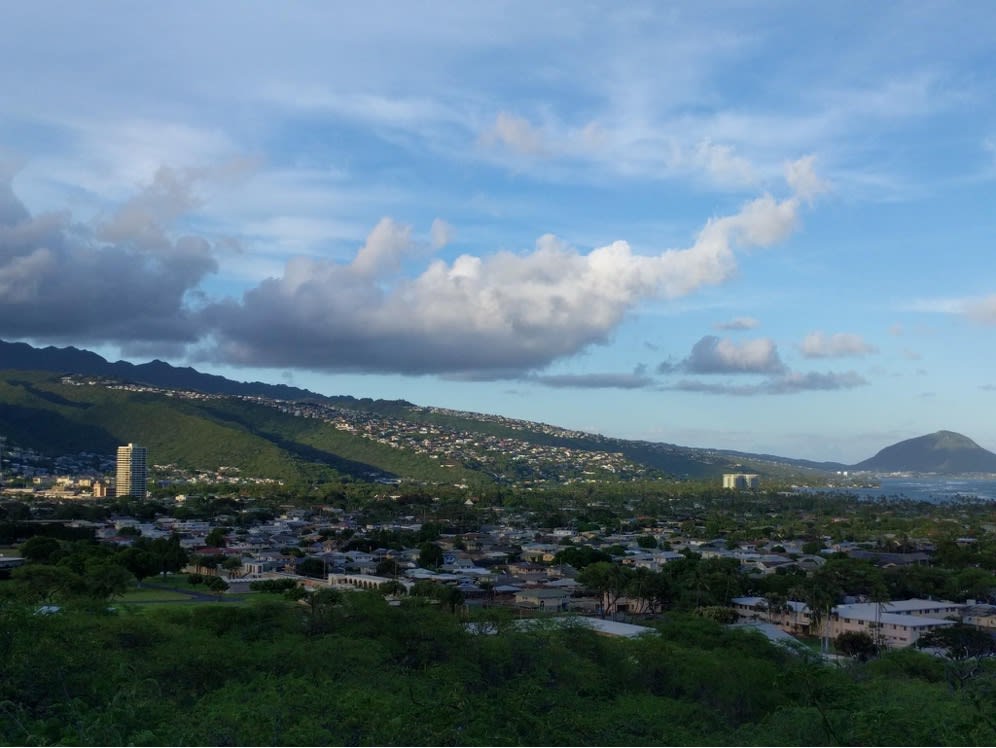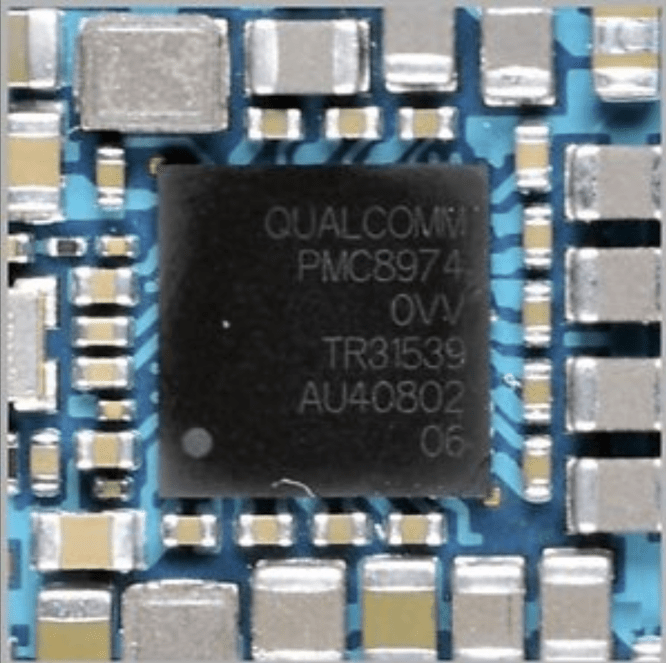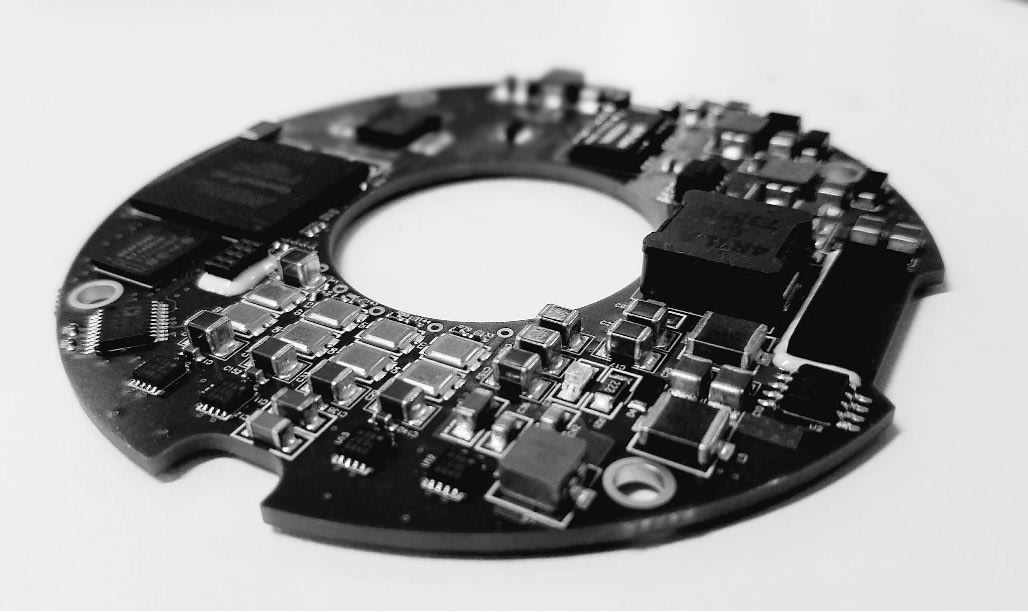Power Circuits: An Island POV on PCB Design
The saying goes "Rome wasn't built in a day". That doesn't refer to the city/state as we know it but rather the empire as it was back when my hometown of Augsburg, Germany. Located where the Wertach River joins the Letch River on its way to the Danube which flows from the Black Forest to the Black Sea. The Danube is a long route starting in Germany and ending up as the border between Romania and the Ukraine.
You might be wondering what all of this has to do with placing components on a PCB. The global circulation of water is a little like the distribution of power on the board. There is a source and an endpoint but it's a closed system. Tributaries may diverge or converge to provide access to the cities and towns along the way. Those features are naturally formed by erosion while we etch away the copper on a PCB using chemistry rather than rainfall. The steering effect is the same in the end.

Figure 1. This disk drive shows how the four larger power pins are segregated from the signal pins using one application-specific connector. Image Credit: Author
This is what I picture when looking at a board outline and a cluster of components arrayed on the outside. A connector on that board carries the current that will drive all of the various devices along a path that you will provide. In place of the four capital cities that populate the banks of the Danube, think of the processor, the memory, the WiFi and the sensor(s) as towns linked by a flow of invisible energy.
There are a whole different set of cases on the other side of the globe where a single ocean is the main feature. A quick aside: the Hawaiian people have two words to describe directions that make more sense than North, South, East and West. The word "Makua" refers to "towards the mountain" while "Makai" points us to the sea. The chip is the mountain and every pin has to get down to the beach to float away on the current

Figure 2. The idea that everything flows to the sea is central to a good fan-out strategy. The nucleus of an atom is another good metaphor for the influence of a device on all of the dependent components. (Thought you might like a pause on the windward coast.) Image Credit: Author
Power is Where the Drama Lives For Most Printed Circuit Boards
Making power connections is a world unto itself. Power integrity has surpassed signal integrity for the amount of detail we have to consider. The fact of the matter is that it's going to be assumed that you can deliver on all of the point to point routing involving the traces. You will isolate the victims, especially from the aggressors. Since space is at a premium, it will be a balancing act. Most islands don't have especially wide roads.
It's up to you to know when to use shepard vias to maintain the sanctuary around the differential pairs and bus lanes. I'll pour the copper and go from there to "massage" the circuit layout so that we get those ground vias around the bus. Resolving timing budgets is assumed. This stuff is the table stakes for the PCB Designer in today's world.
One thing for certain is that traces will be routed and then there will be alterations to that routing. That part was much harder when I started in this business. Now, we can be gentle with an existing trace. If we like it we can hug it. If we need to make way for improvement, we can shove the existing trace out of the way.
Don't even get me started on the dynamic copper that politely steps aside when you come routing through with a new connection. The tools have grown along with the complexity of the boards we create. There's just no going back so it's useful to get familiar with the latest features of your tools. The shape-to-shape air gap constraint can be a safety requirement, particularly for higher voltage.

Figure 3. A Qualcomm PMIC that has 12 switch mode power supplies in one package. It appears that the placement puts the caps before the inductors even though the inductors are the main part of the noise suppression. The series L wants to be first while the shunt caps can actually fit there so you do what you can with what you have.. Image Credit: eBay
Power Management Integrated Circuits, An SOC's Best Friend
This is the routing strategy difference between micro vias and through-hole vias. The farther into the rings of BGA pins you go, the deeper the vias have to reach in the z-axis in order to find a path away from the core of the device. The devices are going to get their power from different voltages and those voltages will be further separated by function.
There would be numerous regulators in play, some of which would be dialed into the same voltage such as +3.3VDC. It's not going to be the same 3.3V domain for all of the 3.3V pins. There's often a need for 2.5V, 1.8V and so on including negative voltages. Splitting it up is usually the job of a Power Management IC or PMIC which is a collection of regulators in one package. (You may need more than one package to feed an SOC.)
If you've ever used a Switch Mode Power Supply, you know that they are dependent on a sizable inductor that is often larger than the individual device. A PMIC is pretty much surrounded by those inductors. The inductors and the obligatory capacitors make a pair that are always too big to be right next to the output pins - which are always on the outer row of the BGA package.
Instead, they have to be moved away from the PMIC forming a row which we connect to the output pins using fan shapes that radiate outward, getting thicker as they approach the inductors. We want them closer for noise abatement but that's physically impossible. PMICs are a compromise every time.

Figure 4. Power and control are on display. This PCBA is charged with rotating a LiDAR sensor twenty times per second while also powering up 32 lasers and 32 detectors for simultaneous location and mapping (SLAM) functionality. Robots, cars and mining equipment are all candidates for electronic spatial awareness. Image Credit: Author
Now, when I write that power is king, it's because so many things are running on battery power where efficiency is the key factor. It isn't just mobile devices though. There isn't an electronic product out there that wants to be a power hog. Of course, we want to be greener. Doing a bang-up job on the Power Delivery Network and executing on the high priority traces is the green solution all along.
More Integration Equals Greater Power Demand
One of the daunting challenges in PCB Design has to do with the higher integration on today's devices. The processors of that bygone era had a pin-count in the upper four hundreds with a single core to feed. The spacing of the pins was more generous at 2.5mm down to 1 millimeter or perhaps 0.8 mm at worst. We can only dream of working with that much space between pins.
Now, we're dealing with devices with half of that pitch. The struggle at 0.4 mm pitch BGAs is real. An IC can still be an island but now, the SOC is doing so many different things, that it looks more like a metropolis on its own. There's a hierarchy of devices that will be close to the SOC. Dynamic and static memory devices are first and second in line.
The remainder of the various parts will have to hope for a good enough location to do their thing. Generally, the power domains will dominate the decisions. Then there's cases like USB connectors or antenna locations where the components will be crowded into a specific part of the board. Those are the outlying islands where contact is limited, maybe even discouraged.
Thermal Considerations Drive PDN Decisions
Big power means big heat. Laying down a grid of power pins will not be effective without a similar number of vias associated with the ground domain. The ground patch can be the answer but may also be augmented with a heat sink. The heatsink can be directly attached to the hot spot or a heat pipe can be used to transfer the energy to an outboard heatsink. These are your rivers and reservoirs that carry away and contain the thermal exhaust of our hard working chip sets.
Placement can be quite European with small domains clustered together. Still, each part of the power grid would like to have isolation from the others. The bridges and tunnels of New York provide a colorful map of all of the boroughs with the minimal interconnects. I tend to see each board as some kind of geography whether a metropolis or a charming village. Those simulation games always need room for the utility companies and likewise, the boards want their specific power structures. Draw the map and make it happen.